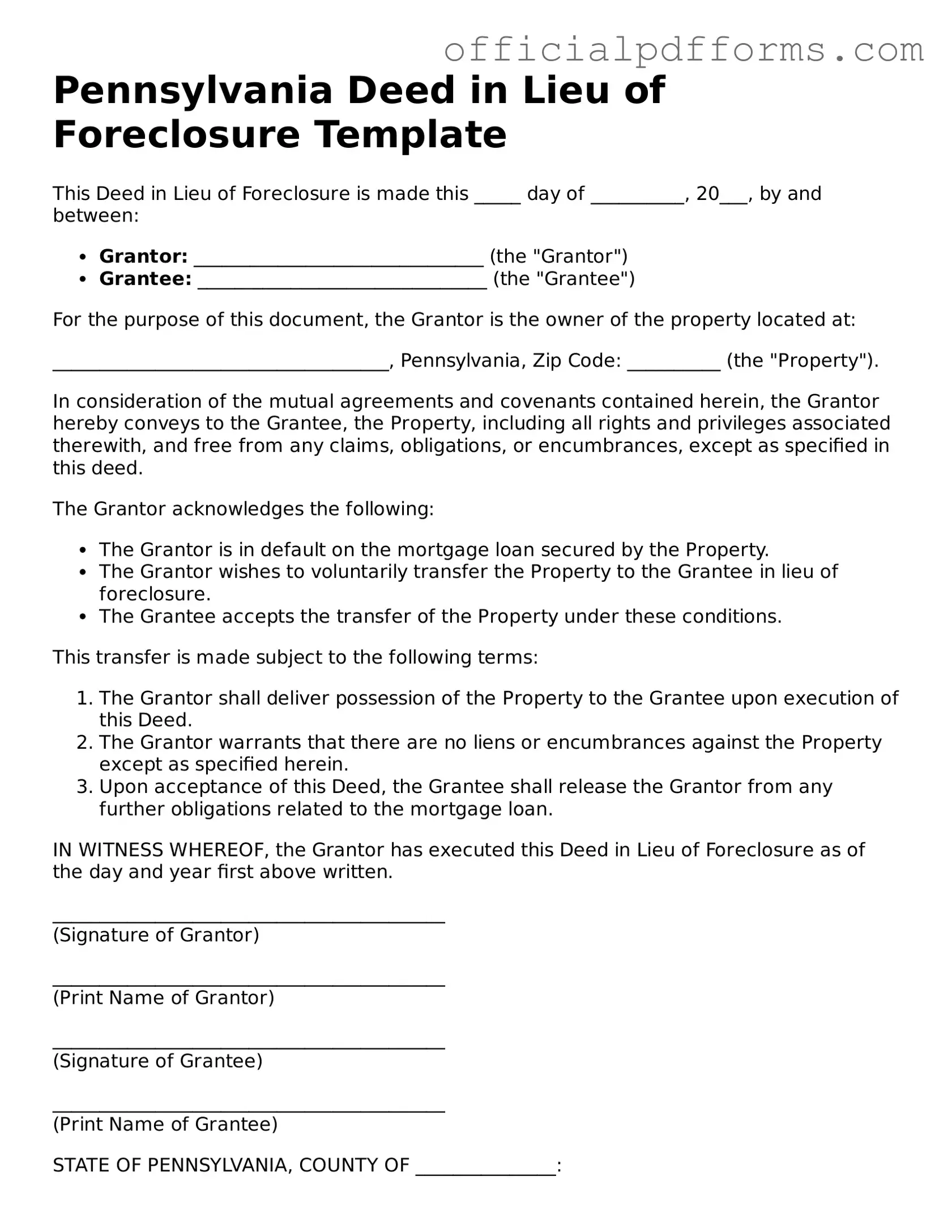Printable Pennsylvania Deed in Lieu of Foreclosure Template
A Deed in Lieu of Foreclosure is a legal document that allows a homeowner to voluntarily transfer ownership of their property to the lender in order to avoid foreclosure. This option can provide a smoother transition and help mitigate the negative impacts of foreclosure on your credit score. If you're considering this route, take the next step by filling out the form below.
Access Form Online
